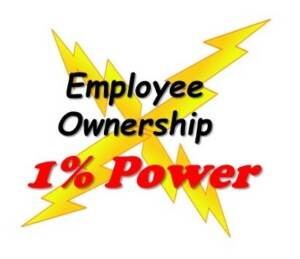Seeking the next competitive edge ought to be an employee-owner no-brainer, right? Because implementing it will make your company more successful and grow ESOP stock value, benefiting everyone. But, despite decades of research confirming ESOPs with informed, involved employees outperform conventional companies, some employees still don’t understand or buy into the concept. And that’s where sports and finance can be powerful metaphors to train people about 1% employee-ownership power.
Golden State and the power of 1% compounding
For a sports example of 1% power, let’s examine the Golden State Warriors’ recent 4-2 playoff series victory over the Houston Rockets. That may sound dominant, but a deeper dig uncovers a tiny difference between the squads: the Warriors scored 670 points; the Rockets netted 659. Eleven points divided by six games equals less than one basket per contest. With both teams averaging close to 110 points a game, a two-point difference amounts to less than 1% of the total points scored. Whether or not one can identify Golden State’s 1% advantage, its significance is crystal clear: the Warriors continue marching toward another NBA title, while the Rockets head to an early vacation (or as NBA analyst Charles Barkley often sarcastically smirks, they cheer 1,2,3 Cancun!).
Just like 1% made the Golden State difference, it’s critical to your company and your career because your ESOP is a long-term, wealth-building tool. Over a 45-year career, how much additional wealth can 1% generate for you? At a 7% rate of return, your stock value doubles every 10.3 years. At 8%, it doubles every nine. In the short haul, that might not seem like much, but when one compounds it over his or her working life, 1% more delivers tremendous financial power. How much? $10,000 invested at 7% becomes $210,000; at 8% it grows to $319,000. In other words, 1% makes a huge difference, whether over a six-game series or someone’s career.
Basketball and finance examples highlight two practical lessons to make the most of employee ownership:
1) Train employees about the power and potential of your ESOP, and
2) Build a workplace where employees can take action in their daily jobs to make the business’ they own 1% better.
ESOPs make the most of 1% employee-ownership power
Lexington, Kentucky-headquartered DC Elevator trained employees about the 1% by distilling its more than 100-page valuation report into key value drivers and sharing them at its annual ESOP meeting. “Our goal is to continue building our ownership culture by connecting employees’ daily work to DC Elevator’s success because everyone benefits through our ESOP,” says Steve Bowlds, DC Elevator’s president. “Workplace Development’s interactive training and customized materials enabled us to strengthen that critical connection.” To make the 1% employee-ownership power link, employees discussed specific, DC Elevator-related business items/daily decisions they could control, influence or not control.
Just like DC Elevator, successful ESOP companies work to focus, harness and unleash 1% employee-ownership power. At a recent PerryProTech new employee ESOP orientation (the session trained 35 people about the company’s ESOP and the critical role employee-owners play in the firm’s ownership culture), CEO Barry Clark closed the upbeat meeting by reinforcing the power of small, incremental, continuous improvements. “All I ask,” he said, “is that you get a little better in your job every day. Get better serving our customers, think and implement ideas to improve our service quality, share ideas to help your team and our company succeed. Because, if all of us to that, every day, we will continue our long history of success.”
As many ESOP companies demonstrate, employee ownership’s power can amount to much more than an additional 1%. So, if you’re a leader at an ESOP enterprise, what are you doing to ensure that people understand the benefits of your ESOP? What are you doing to create the environment to enable all employees to become 1% better every day? And, if you’re an employee-owner, what have you done today to make yourself and your company better?
Because if you’re not doing it, who is?


